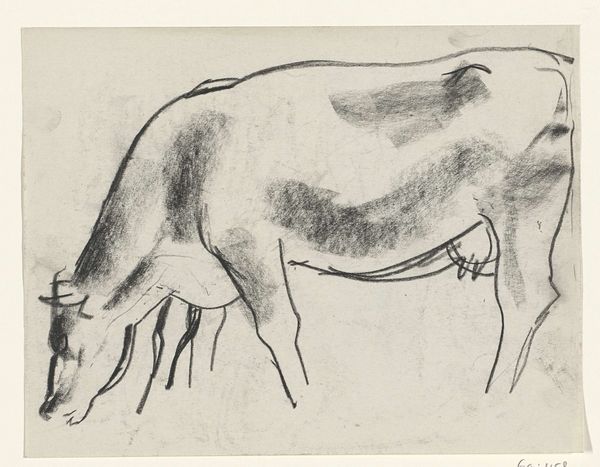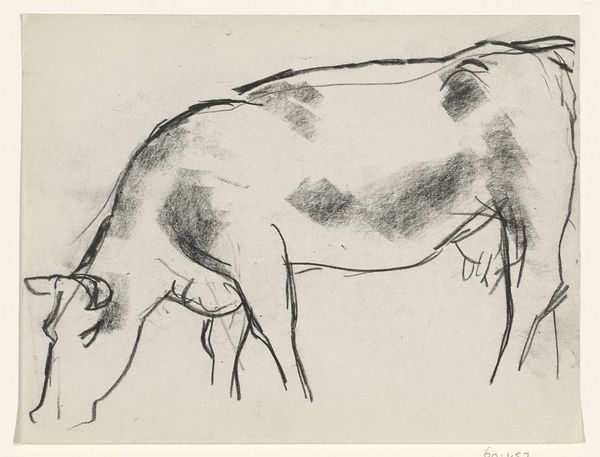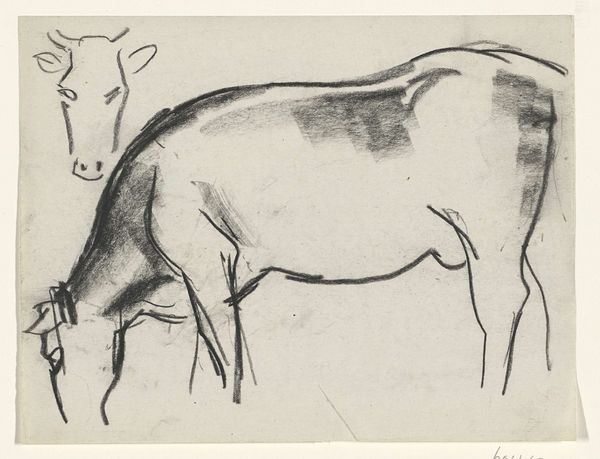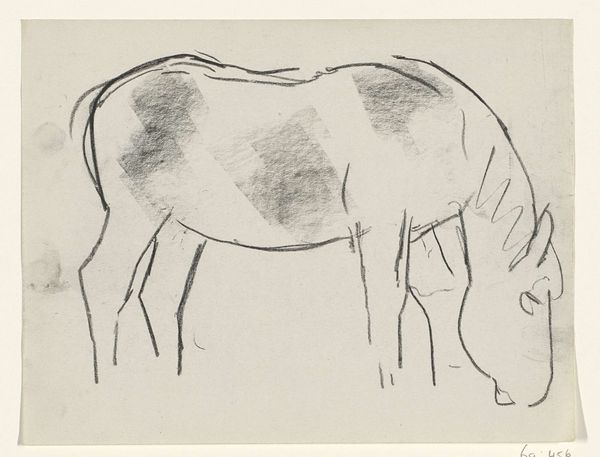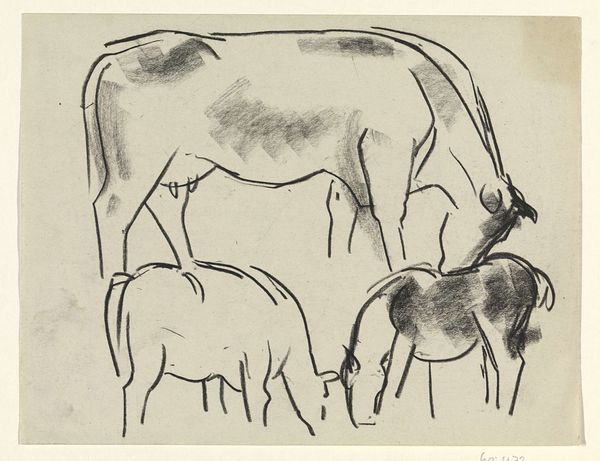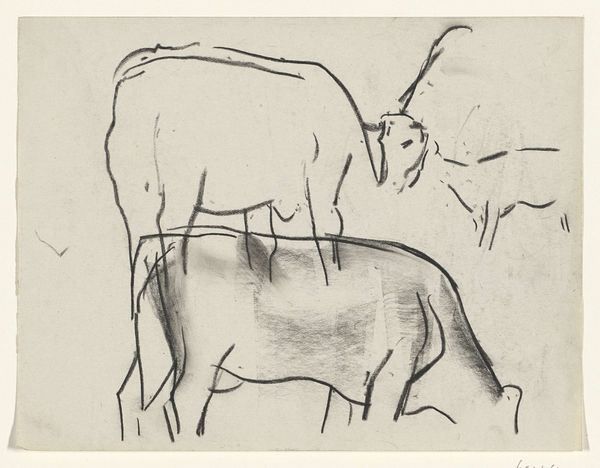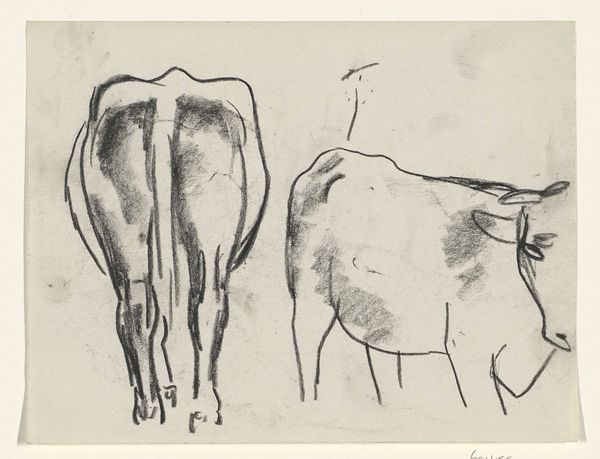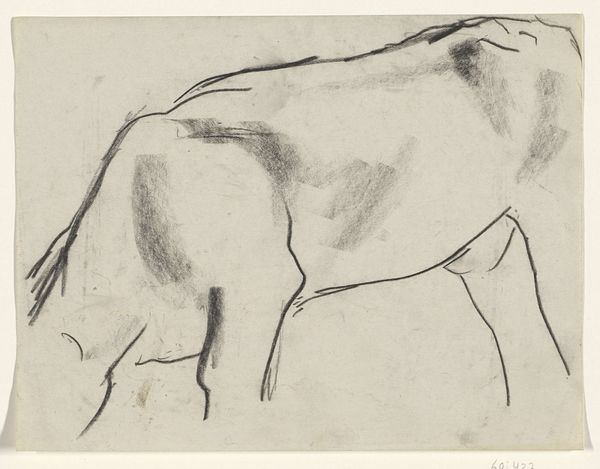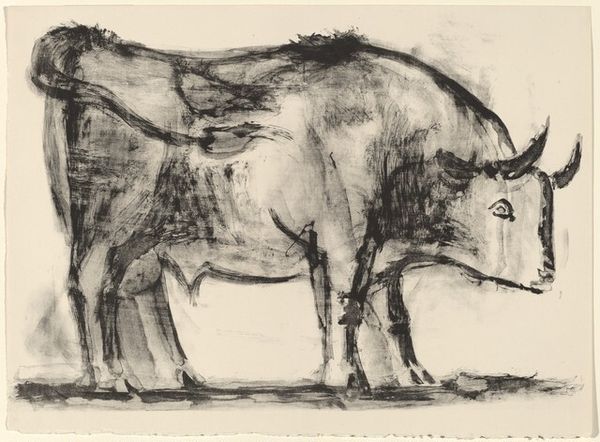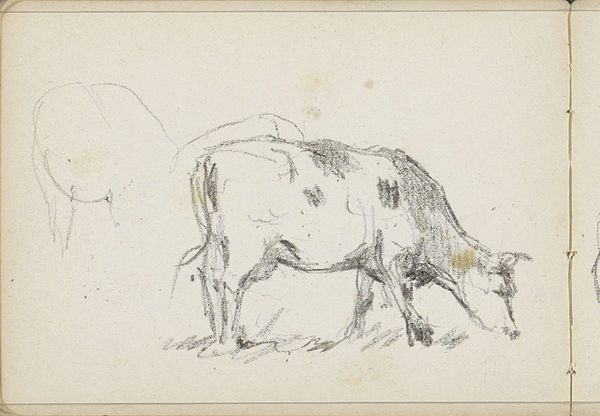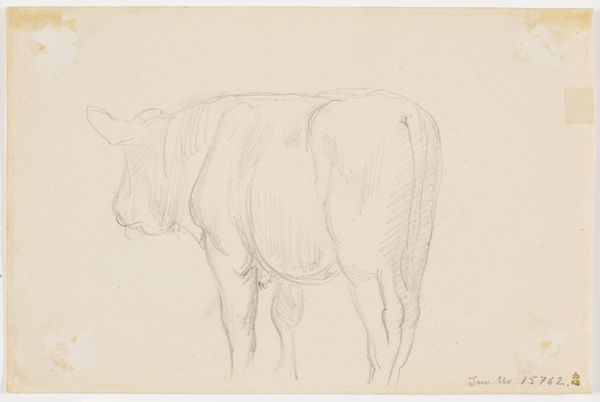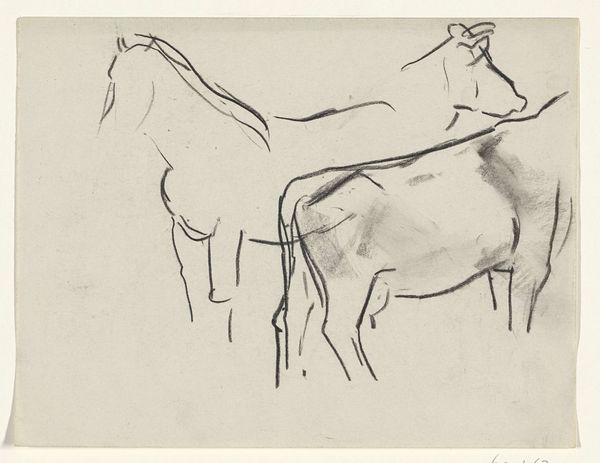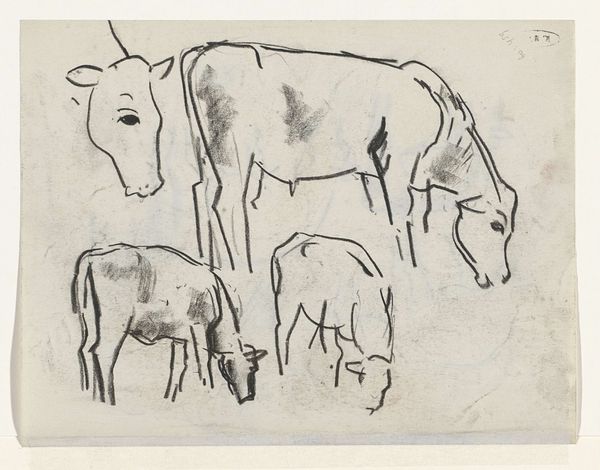
drawing, pencil
#
drawing
#
pencil sketch
#
landscape
#
form
#
pencil
#
line
#
realism
Dimensions: height 163 mm, width 212 mm
Copyright: Rijks Museum: Open Domain
Curator: Here we have a drawing titled "Lichaam van een grazende koe," which translates to "Body of a Grazing Cow." It’s a pencil drawing by Leo Gestel, made sometime between 1891 and 1941. Editor: My initial impression is of something unfinished, fleeting even. The lines are so simple, almost skeletal, yet the form of the cow is undeniable. Curator: Gestel was exploring the essence of form here. Cows, of course, are deeply tied to the rural landscape of the Netherlands, subjects that provided artists a kind of connection to a slower pace, before industrial advancements really changed the socio-economic fabric of Dutch culture. This sketch would certainly participate in this romantic trend. Editor: Cows carry a significant weight as symbols. In many cultures, the cow embodies motherhood, nurture, and connection to the earth, because of their production of milk. Does this cow invoke those archetypes in the modern era, or does it just represent the bucolic peace? Curator: Perhaps Gestel's minimalist approach strips away some of those deeper layers of symbolism, focusing instead on pure representation. Think of it this way: by leaving so much to the imagination, the sketch creates a democratic art piece, one open to multiple interpretations, without committing to any prescribed socio-political message. Editor: Yet that very lack of detail allows us to project our own associations. Is that angularity intentional? Gestel had many creative evolutions but he moved from impressionism to an abstract form that allowed him to play with this form. Perhaps he aimed to defamiliarize our view, disrupting comfortable rural cliches. Curator: Indeed, we mustn't forget that even seemingly simple sketches often hold complex layers of meaning, deliberately or inadvertently. The simplicity of the line belies a depth of associations, of artistic intention, and cultural placement. Editor: Yes, this initially stark, minimalist sketch ends up prompting contemplation about how we interpret symbols in both art and life. The artistic line, as economic as it may be, makes it richer as an image.
Comments
No comments
Be the first to comment and join the conversation on the ultimate creative platform.
